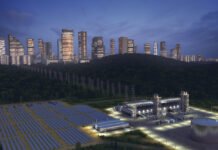In pumps, the total pump life cycle cost is gotten by adding ongoing and periodic costs to the buying equation. The LCC method used to determine total cost of ownership is usually practiced more by industrial than municipal users.
These days, inasmuch as many wastewater treatment plants may feel pressured to buy equipment based on the lowest acquisition price, buyers are increasingly measuring the value of quality and service by adding ongoing and periodic life cycle costs to the buying equation.
Identifying Pump Life Cycle Costs
LCCs are categorized into three; acquisition, annual and periodic. However, some factors are easier to determine than others. Be that may, that should not negate the importance of any of them. Furthermore, LCC analysis may not be an exact science, but it is way better than sole reliance on acquisition costs.
Operational Cost Saving Strategies
There are a number of strategies that rotary lobe pump end users in particular can adopt to reduce costs. One of such is the selection of a manufacturer that sizes correctly for the long term. Secondly, one should be sure to purchase a variable frequency drive (VFD). This will enable the user to ramp up speed to maintain output rather than buying wear parts prematurely.
Furthermore, some experts say it is often wise to purchase slightly larger pumps than might be necessary for a desired flow. This is especially the case when it comes to abrasive fluids as it will go a long way towards saving money on parts by running them at slower speeds.
Also Read: Working principle and maintenance of Peristaltic metering pumps
Effective cost saving strategies should also take into account the exponential relationship between rotational speed and wear. As such, the user should make sure to track each pump’s efficiency. This can be achieved by ensuring it is on the right side of the trade-off between replacing wear parts versus higher energy costs associated with running pump motors at higher speeds.
Notably, durable parts last longer and manual compensating pressure oil bottles both consume time and are vulnerable to damage. As such, be sure to take advantage of designs with money saving features. Some of these include reversible wear plates, cartridge seals with reusable holders and adjustable housing segments. The end users should thus look out for replaceable parts designed for “easy” applications accompanied by advertising that implies all applications.
Pump operators should be sent for training to ensure that they can properly maintain the pumps, whether changing parts, changing oil or respecting tolerances. Additionally, inexpensive sensors that alert users of abnormal conditions should be installed. Moreover, unless it is required, the number of models in a particular plant should always be kept at a minimal. This will help reduce inventory costs significantly.
End users should also make use of the designs that require less time to replace wear parts or rebuild free operators to attend to preventive maintenance.
When picking suppliers, factors such as reliability, ease of use, consistent pricing and part availability should be put into consideration. This, coupled with relying on references, comparing warranties, training and questioning issues such as pump testing with regards to horsepower will go a long way towards ensuring minimum life cycle cost.
Although NPV is generally used to identify the “highest” number derived from discounted streams of income earned less initial investment, all cash flows are negative and need to be entered as such. The best total cost alternative will be the least negative number, derived from discounted streams of future ongoing and periodic costs, added to initial acquisition costs.





[…] Also Read: These factors will help you minimize total pump life cycle cost […]